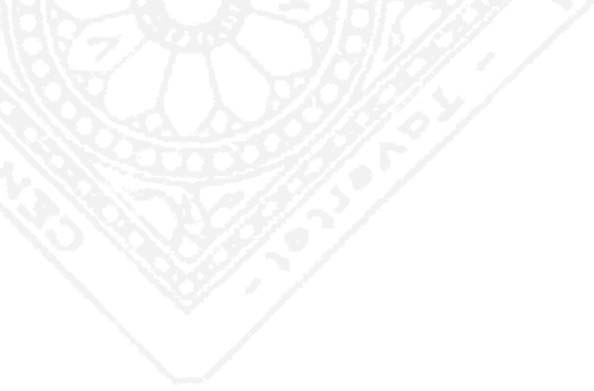



VITAL AND INTELLECTUAL JOURNEYS
3. India. Christian-Hindu-Buddhist symbiosis. Meeting Monchanin and Le Saux (1955-1966)
At the end of 1954 Panikkar left Europe to go to India. He was already 36 when he went to the land of his forefathers, feeling that this would be a decisive event in his life. Meeting India’s cultures and religions opened up new horizons in Panikkar’s understanding of God, the human being and the cosmos. He encountered Hinduism and Buddhism at a deep level; he remained a Christian, but his perspective and positions had changed. «I 'left' as a Christian, I 'found' myself a Hindu and I 'return' a Buddhist, without having ceased to be a Christian» (The Intrareligious Dialogue, New York 1978).
In India he mainly lived basically in Varanasi, the most holy city for Hinduism, in a small room within an old Shiva temple by the Ganges; he was happy and devoted himself to studying, writing, praying and meditating… “I see this period of my life as one of the most joyful”, he will remark a number of times. He worked as a researcher for the universities of Varanasi and Mysore, digging deeper into the roots of Hinduism and Buddhism while acknowledging that these are also his own roots.
Panikkar was transformed by a number of people that he met in those years, among them two French monks that pioneered interreligious dialogue, Jules Monchanin (Swami Paramarubiananda, 1895-1957) and the Benedictine monk Henri Le Saux (Swami Abhishiktananda, 1910-1973), both founders of the Saccidananda ashram, as well as the English Benedictine father Bede Griffiths (Swami Dayananda, 1906-1993). All of them tried to incarnate themselves to the Hindu reality, deeply committing themselves with its culture and religion, to the extent of declaring themselves both Christian and Hindu. It was with them, particularly with Le Saux, that Panikkar found confirmation that it is possible to be simultaneously Christian and Hindu, thanks to Advaita’s overcoming of dualism. Panikkar was the first president of the Abhishiktananda Society (1978-1988).
Panikkar’s encounter with Buddhism was stimulated by a commission to write an article on Buddhist atheism for an Italian encyclopedia on atheism, published a few years later (G. Girardi, L'ateismo contemporaneo). Besides his exchanges on Hindu mysticism with Bhikkhu Kashyapa, among others, and on Buddhist mysticism with the XIV Dalai Lama as well as in Japanese Zen monasteries, we should also mention Panikkar’s relationship with other Christians that were trying to reach the same Hindu-Christian experience.
Although he was now based in India, Panikkar travelled back to Europe many times and also to many other parts of the world. He obtained a Doctorate of Science from Madrid University with his dissertation Algunos problemas limítrofes entre ciencia y filosofía. Sobre el sentido de la ciencia (1958), published three years later as Ontonomía de la ciencia. Sobre el sentido de la ciencia y sus relaciones con la filosofía (Madrid 1961).
Shortly after he defended his dissertation in Theology at the Lateran University in Rome (1961), which became one of his most successful and widely translated books: The Unknown Christ of Hinduism (London 1964). In The Unknown Christ of Hinduism Panikkar studies the encounter between Hinduism and Christianity, arguing that there is a living presence of Christ within Hinduism.
In these years he taught Philosophy as a Libero Docente at the University of Rome, as well as Sociology at the International University of Social Studies Pro Deo, and Philosophy of Religion at the International University of Rome. He also took part in the Synod of Rome and in the Vatican II.
In 1964 Panikkar returned to India to resume his research into Hindu philosophy, working for the Christian Institute for the Study of Religion and Society (1968-75), led by M.M. Thomas. He was commissioned to lecture on Indian philosophy, culture and religion in a number of Latin American countries by the Council of Indian States for Cultural Relations, and he even became a Delegate for the Indian States at UNESCO’s Meeting in Buenos Aires in 1966. In that same year he was offered a Chair at Banaras Hindu University, but in the end it was not awarded to him due to his Christian faith.
Over this period he continued to be publish in journals from around the world, both in the West (Philosophy Today, Der Christliche Sonntag, East and West, Bulletin du Cercle de St. Jean Baptiste, Kairos, Nuestro Tiempo, El Ciervo, Qüestions de vida cristiana, Orbis Catholicus, Atlántida, Revista de Occidente, Viveka, Il Nuovo Osservatore, Mitte Me, Humanitas, Studi Cattolici, Testimonianze, L'Osservatore Romano, Civiltà delle Macchine, Cross-Currents, Journal of Ecumenical Studies, Criterio, etc.), and in the East (The King's Rally y Vedanta Kesari de Madras, The Examiner de Bombay, Religion and Society de Bangalore, Prabuddha Bharata, Indian Ecclesiastical Studies, Asian Carmels in Communion de Manila, Philosophy East & West de Honolulu, etc.).
He also published a number of books: Die vielen Götter und der eine Herr (Weilheim 1963); Religion and Religions (original English manuscript, unpublished; published in Italian, Spanish and German). At the same time he delved into his relationship to Hinduism, publishing Kultmysterium in Hinduismus und Christentum (Freiburg-München 1964) and Maya e Apocalisse (Roma 1966).
Panikkar was still based at the diocese of Varanasi. But just when he seemed to be fully established in India he was unexpectedly offered a Chair in the United States: “I thought I would remain there all my life. I was happy, living simply. But I had the misfortune of writing an article that was discovered by a Harvard Professor; he liked it to the extent of inviting me there as a Professor”.
*1. An Outstanding Man. Raimon Panikkar’s Fourfold Identity
*4. University teaching in California (1966-1987)
*5. His return to his Catalan roots to complete his vital cycle
*6. Raimon Panikkar: Writing as a Life-style
